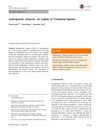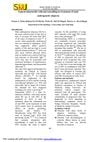[20M]What 8 months of no progress looks and feels like on fin/min/derma. Finasteride/Dutasteride 4/12/2024
A 20-year-old has seen no improvement in hair loss after 8 months using finasteride, minoxidil, topical solutions, and microneedling. They express frustration and a loss of confidence due to the lack of results.
View this post in the Community →
Similar Community Posts Join
6 / 1000+ resultscommunity 6 months progress on Topical FIN/MIN, Topical DUT for NW7
User made progress with topical Finasteride/Minoxidil and topical Dutasteride for hair loss. Microneedling at 1.5mm daily was also mentioned as part of the treatment.
community What is the ultimate hair regrowth protocol
The conversation covers aggressive hair regrowth treatments like Dutasteride, Minoxidil (oral and topical), RU58841, microneedling, and ketoconazole shampoo. It also mentions PRP, laser therapy, GHK-Cu injections, and hormone therapy for maximum regrowth.
community 27yrs Balding since 16 , Progress (Fluridil , Pantostin ,Minoxidil,Stemoxydine,Microneedling,Nizoral)
A user has been experiencing hair loss since 2013 and has tried various treatments including finasteride, minoxidil, fluridil, pantostin, stemoxydine, microneedling, and Nizoral. They reported improvement after adding antiandrogens and other treatments in July of the previous year but stopped finasteride due to erectile dysfunction.
community 18 Months Minoxidil 5% Before & After
The user used Minoxidil 5% for 18 months, seeing improved hair density but no change in the crown area. They are cautious about using Finasteride again due to past gynecomastia.
community M18 - 7 Months on topical fin + min Not working for me
Topical finasteride and minoxidil are not effective for the user, who is considering switching to oral treatments like finasteride or dutasteride. Many suggest oral medications are more effective, and some recommend additional treatments like microneedling and other topical solutions.
community Lipisomal Solution (Dutasteride / Tretinoin & Minoxidil & Tretinoin) Horror Story Warning
Using liposomal solutions with dutasteride, minoxidil, and tretinoin worsened hair loss due to buildup and scalp issues. Consulting a professional and returning to simpler treatments like finasteride and minoxidil improved the situation.
Related Research
6 / 1000+ results
research Androgenetic Alopecia: An Update Of Treatment Options
Minoxidil is the only FDA-approved topical drug for treating male or female pattern hair loss, and other medications like finasteride and dutasteride can also increase hair growth.

research Topical Dutasteride with Microneedling in Treatment of Male Androgenetic Alopecia
Combining topical dutasteride with microneedling is more effective for hair growth than microneedling alone.
research Treatment of Androgenetic Alopecia: Current Guidance and Unmet Needs
More personalized and effective treatments for androgenetic alopecia are needed.

research Androgenetic Alopecia in Transgender and Gender Diverse Populations: A Review of Therapeutics
The document concludes that treatments for hair loss in transgender and gender-diverse individuals include topical solutions, oral medications, laser therapy, and hair restoration procedures, with progress assessed after 6-12 months.

research Clinical Trials and Hair Loss
Many treatments for hair loss show potential, but more testing is needed to confirm their effectiveness. Only minoxidil for women and minoxidil and finasteride for men are FDA approved.
research Female Pattern Hair Loss: Therapeutic Update
Topical minoxidil is the best-supported treatment for female hair loss, but personalized plans are needed.